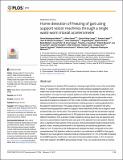| dc.contributor.author | Rodríguez-Martín, Daniel | |
| dc.contributor.author | Samà, Albert | |
| dc.contributor.author | Pérez-López, Carlos | |
| dc.contributor.author | Català, Andreu | |
| dc.contributor.author | Moreno Arostegui, Joan M. | |
| dc.contributor.author | Cabestany, Joan | |
| dc.contributor.author | Bayés, Àngels | |
| dc.contributor.author | Alcaine, Sheila | |
| dc.contributor.author | Mestre, Berta | |
| dc.contributor.author | Prats, Anna | |
| dc.contributor.author | Cruz Crespo, M. | |
| dc.contributor.author | Counihan, Timothy J. | |
| dc.contributor.author | Browne, Patrick | |
| dc.contributor.author | Quinlan, Leo R. | |
| dc.contributor.author | Ó Laighin, Gearóid | |
| dc.contributor.author | Sweeney, Dean | |
| dc.contributor.author | Lewy, Hadas | |
| dc.contributor.author | Azuri, Joseph | |
| dc.contributor.author | Vainstein, Gabriel | |
| dc.contributor.author | Annicchiarico, Roberta | |
| dc.contributor.author | Costa, Alberto | |
| dc.contributor.author | Rodríguez-Molinero, Alejandro | |
| dc.date.accessioned | 2017-04-03T12:07:12Z | |
| dc.date.available | 2017-04-03T12:07:12Z | |
| dc.date.issued | 2017-02-15 | |
| dc.identifier.citation | Rodriguez-Martin, D;Sama, A;Perez-Lopez, C;Catala, A;Arostegui, JMM;Cabestany, J;Bayes, A;Alcaine, S;Mestre, B;Prats, A;Crespo, MC;Counihan, TJ;Browne, P;Quinlan, LR;OLaighin, G;Sweeney, D;Lewy, H;Azuri, J;Vainstein, G;Annicchiarico, R;Costa, A;Rodriguez-Molinero, A (2017) 'Home detection of freezing of gait using support vector machines through a single waist-worn triaxial accelerometer'. PLOS ONE, 12(2), e0171764. doi: 10.1371/journal.pone.0171764 | en_IE |
| dc.identifier.issn | 1932-6203 | |
| dc.identifier.uri | http://hdl.handle.net/10379/6424 | |
| dc.description.abstract | Among Parkinson's disease (PD) symptoms, freezing of gait (FoG) is one of the most debilitating. To assess FoG, current clinical practice mostly employs repeated evaluations over weeks and months based on questionnaires, which may not accurately map the severity of this symptom. The use of a non-invasive system to monitor the activities of daily living (ADL) and the PD symptoms experienced by patients throughout the day could provide a more accurate and objective evaluation of FoG in order to better understand the evolution of the disease and allow for a more informed decision-making process in making adjustments to the patient's treatment plan. This paper presents a new algorithm to detect FoG with a machine learning approach based on Support Vector Machines (SVM) and a single tri-axial accelerometer worn at the waist. The method is evaluated through the acceleration signals in an outpatient setting gathered from 21 PD patients at their home and evaluated under two different conditions: first, a generic model is tested by using a leave-one-out approach and, second, a personalised model that also uses part of the dataset from each patient. Results show a significant improvement in the accuracy of the personalised model compared to the generic model, showing enhancement in the specificity and sensitivity geometric mean (GM) of 7.2%. Furthermore, the SVM approach adopted has been compared to the most comprehensive FoG detection method currently in use (referred to as MBFA in this paper). Results of our novel generic method provide an enhancement of 11.2% in the GM compared to the MBFA generic model and, in the case of the personalised model, a 10% of improvement with respect to the MBFA personalised model. Thus, our results show that a machine learning approach can be used to monitor FoG during the daily life of PD patients and, furthermore, personalised models for FoG detection can be used to improve monitoring accuracy. | en_IE |
| dc.description.sponsorship | Part of this project has been performed within the framework of the MASPARK project which is funded by La Fundació La Marató de TV3 20140431. This work also forms part of the framework of the FP7 project REMPARK ICT-287677, which is funded by the European Community. | en_IE |
| dc.format | application/pdf | en_IE |
| dc.language.iso | en | en_IE |
| dc.publisher | Public Library of Science | en_IE |
| dc.relation.ispartof | Plos One | en |
| dc.rights | Attribution-NonCommercial-NoDerivs 3.0 Ireland | |
| dc.rights.uri | https://creativecommons.org/licenses/by-nc-nd/3.0/ie/ | |
| dc.subject | Parkinsons disease patients | en_IE |
| dc.subject | Physical activity | en_IE |
| dc.subject | System | en_IE |
| dc.subject | Motor | en_IE |
| dc.subject | Identification | en_IE |
| dc.subject | Questionnaire | en_IE |
| dc.subject | Abnormalities | en_IE |
| dc.subject | Frequency | en_IE |
| dc.subject | Symptom | en_IE |
| dc.subject | Sensor | en_IE |
| dc.title | Home detection of freezing of gait using support vector machines through a single waist-worn triaxial accelerometer | en_IE |
| dc.type | Article | en_IE |
| dc.date.updated | 2017-04-03T10:24:47Z | |
| dc.identifier.doi | 10.1371/journal.pone.0171764 | |
| dc.local.publishedsource | http://dx.doi.org/10.1371/journal.pone.0171764 | en_IE |
| dc.description.peer-reviewed | peer-reviewed | |
| dc.contributor.funder | |~| | |
| dc.internal.rssid | 12284575 | |
| dc.local.contact | Leo Quinlan, Dept. Of Physiology, Quadrangle Building, Nui Galway. 3710 Email: leo.quinlan@nuigalway.ie | |
| dc.local.copyrightchecked | No | |
| dc.local.version | ACCEPTED | |
| nui.item.downloads | 341 | |


